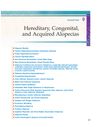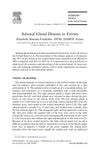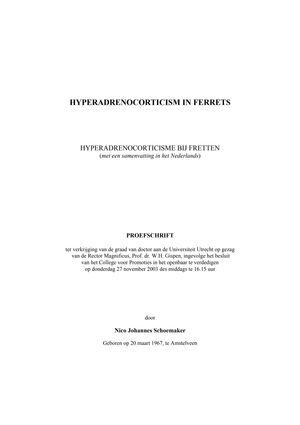TLDR Hyperadrenocorticism in ferrets is linked to neutering and indoor housing, and is best treated with surgery and a deslorelin implant.
This chapter discussed the pathogenesis, classical signs, diagnosis, and treatment of hyperadrenocorticism in ferrets, also known as adrenocortical disease. The condition was linked to neutering, indoor housing, and genetic factors. Pruritus, often associated with infectious causes of alopecia, was frequently observed in affected ferrets. Abdominal ultrasonography was highlighted as a valuable diagnostic tool for assessing adrenal gland size and location. Differential diagnoses included non-ovariectomized ferrets or those with active remnant ovaries. The recommended treatment combined surgery with the placement of a deslorelin implant.
83 citations
,
July 1993 in “Journal of the American Veterinary Medical Association” Diagnosis of adrenal issues in ferrets should use symptoms, ultrasound, and surgery, not ACTH tests.
83 citations
,
July 1993 in “Journal of the American Veterinary Medical Association” Diagnosis of adrenal issues in ferrets should use symptoms, ultrasound, and surgery, not ACTH tests.
 1 citations
,
January 2006 in “Elsevier eBooks”
1 citations
,
January 2006 in “Elsevier eBooks” The conclusion is that different types of hair loss in dogs and cats can be cosmetic or serious, and affected animals should not be bred.
 19 citations
,
January 2008 in “The veterinary clinics of North America. Exotic animal practice”
19 citations
,
January 2008 in “The veterinary clinics of North America. Exotic animal practice” Adrenal gland disease is common in ferrets and causes hair loss and other symptoms.
 48 citations
,
March 1997 in “Veterinary Dermatology”
48 citations
,
March 1997 in “Veterinary Dermatology” Some cats with sudden hair loss and tiredness might have cancer-related alopecia.

Accurate diagnosis and tailored treatments are crucial for managing hair loss in humans and animals.




